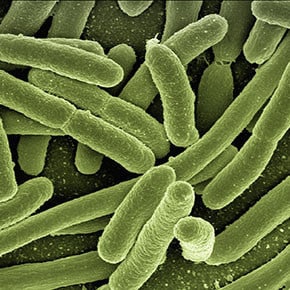- PANDAS
- PANDAS and PANS

PANDAS and PANS
Articles
- Anxiety/Depression
- Food Sensitivities
- Infections
- Lyme Disease
- PANDAS
- Pathogens
Health Clinic
PANDAS and PANS
PANDAS and PANS
Raising children is stressful enough. What are you to do if your child develops uncharacteristic behavioral issues out of the clear blue, appears anxious or irritable, starts acting younger than their age, or is displaying unusual food restrictions and other ritualistic behaviors? You might want to have them tested for PANS and PANDAS.
PANS (Pediatric Acute Onset Neuropsychiatric Syndrome) and PANDAS (Pediatric Autoimmune Neuropsychiatric Disorder Associated with Streptococcal Infections) are both severe types of obsessive-compulsive disorder (OCD). While both are typically caused by infections, PANDAS is specifically due to strep.
Thankfully, treatments are available to address both conditions. In some patients, herbal and/or prescription antibiotics may be able to fully resolve symptoms. For others, they may need additional protocols to balance neurotransmitters and brain chemistry, either in the form of a supplement or sometimes even prescriptions or talk therapy. However, the journey begins with a diagnosis that identifies the symptoms and rules out other conditions.
What is PANS?
Children with PANS display neuropsychiatric symptoms that can arise (seemingly) overnight or within 48 hours.
PANS cases are typically thought to be due to an infection that causes an unusual inflammatory or autoimmune response in the brain. The condition has been linked to infections like H1N1 flu, chickenpox, and Lyme disease. Other causes may include toxic mold exposure, metabolic disturbances, and psychological trauma.
Symptoms may include:
- sleep disturbances like bedwetting
- sensitivity to light or noise
- reduced attention span
- separation anxiety
- ticks (uncontrollable movements)
- compulsion
- irritability or rage
- panic
- decreased handwriting
- loss of age-related language skills
- food restrictions that may lead to weight loss
- depression or suicidal tendencies
What is PANDAS?
PANDAS is the only known subset of PANS. PANDAS is caused by streptococcal infections, like strep throat or scarlet fever, which too affects the brain. Symptoms may present within 3 days.
PANS and PANDAS Diagnostic Testing
To diagnose PANS, a Vibrant Health specialist will review the child’s symptoms and rule out other conditions. Doing so may require a(n):
- Review of the child’s medical history
- Physical exam
- Psychiatric evaluation
- “The Cunningham Panel” (labwork)
- Immune deficiency screening (labwork)
- Neurotransmitter Testing
- Methylation Pathway Evaluation
- MRI
- Urine culture
- Neural Zoomer (labwork)
- Strep (ASO and culture), Lyme Disease and co-infection work-up (labwork)
- Sleep study
- Genetic Testing to better understand how we can support your child with natural or prescription therapies.
A diagnosis of PANS can likely be made if two of the seven following symptom criteria are found:
- Somatic symptoms
- Oppositional behaviors
- Forms of anxiety
- Behavioral regression
- Motor or sensory abnormalities
- School performance deterioration
- Emotional lability
PANS and PANDAS Treatment
Treatment for PANS and PANDAS involves both the addressing of symptoms and future episodes. Dr. Schertell, Dr. Moran and Dr. Mauss will work with you to find the best treatment plan for your family.
Antimicrobial Therapies
Herbal and/or prescription antibiotics are used to help treat symptoms in each occurrence of PANS and PANDAS. If antimicrobials are given soon after symptoms appear, the higher likelihood of the symptoms dissipating quickly.
The initial course of antimicrobials may last for about 3 weeks, and the child may respond within a week of treatment. Some patients may need long-term treatment; those with PANDAS will need long-term antimicrobials to prevent future infections (prophylaxis).
Other Treatment Options
Some children need supportive interventions (such as school accommodations) and other protocols besides antibiotics. Dr. Schertell, Dr. Moran or Dr. Mauss will discuss additional treatment options with you, which may include:
- LDN therapy
- Therapeutic nutrition
- Low Dose Immunotherapy
- Methods to maintain nutrition
- Cognitive behavioral therapy
- Peptides to support healing including brain and nervous system recovery.
- Homeopathy
- Anti-inflammatory treatments
- Neurotransmitter balancing supplements or medications like a selective serotonin reuptake inhibitor
- Intravenous immunoglobulin
- Biofilm treatments
- Other targeted treatments based on the identified underlying cause.
-
{{#owner}}
-
{{#url}}
{{#avatarSrc}}
{{name}} {{/url}} {{^url}} {{#avatar}} {{& avatar}} {{/avatar}} {{name}} {{/url}} - {{/owner}} {{#created}}
- {{created}} {{/created}}












